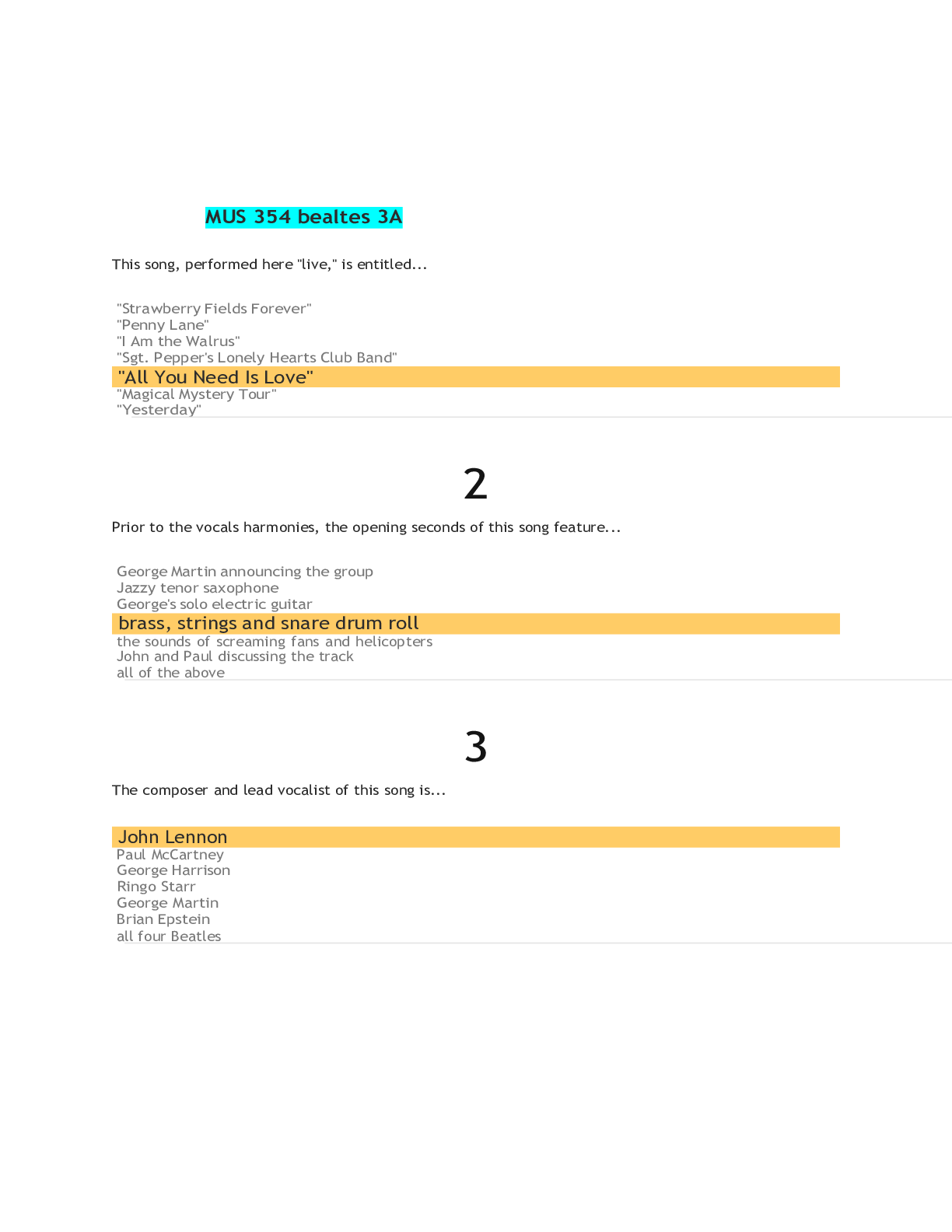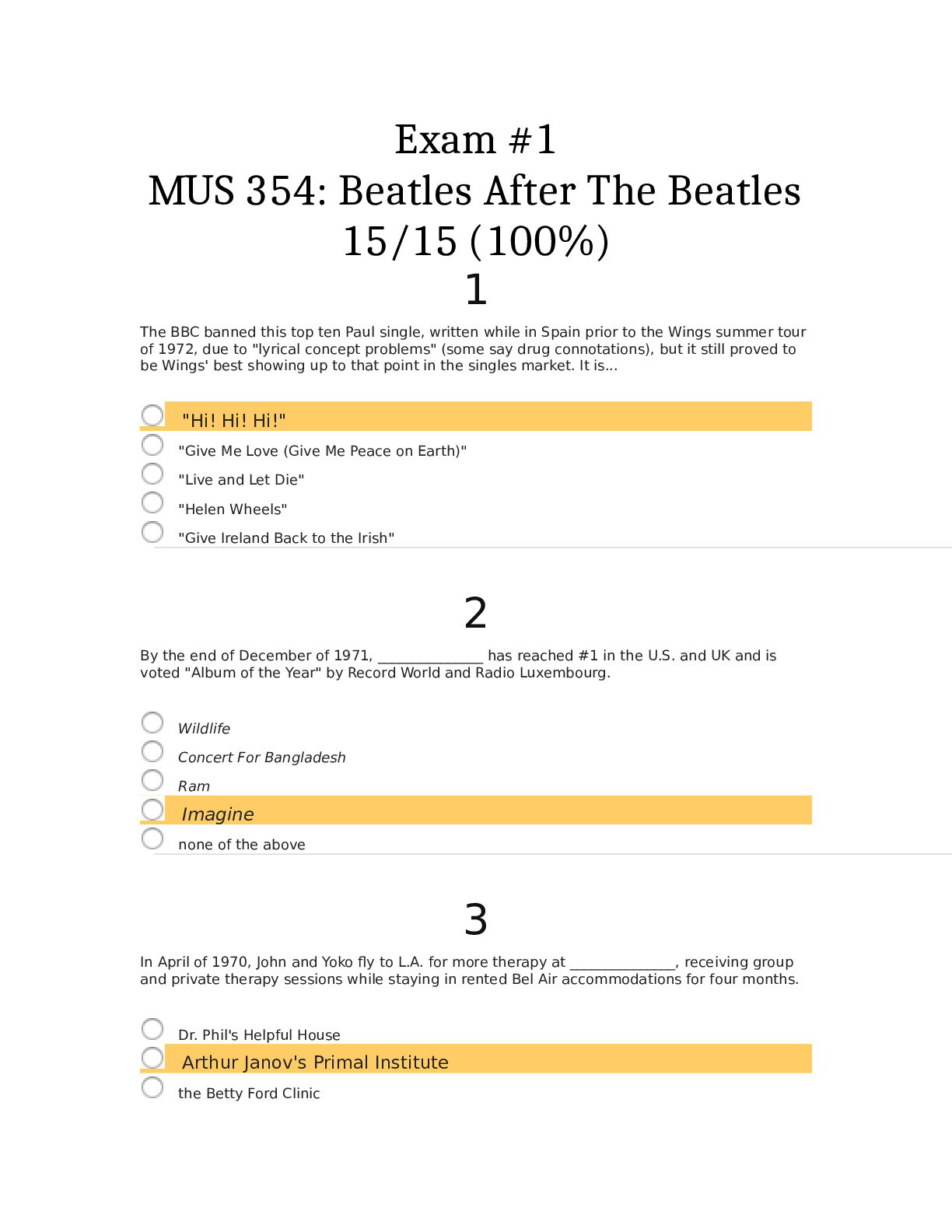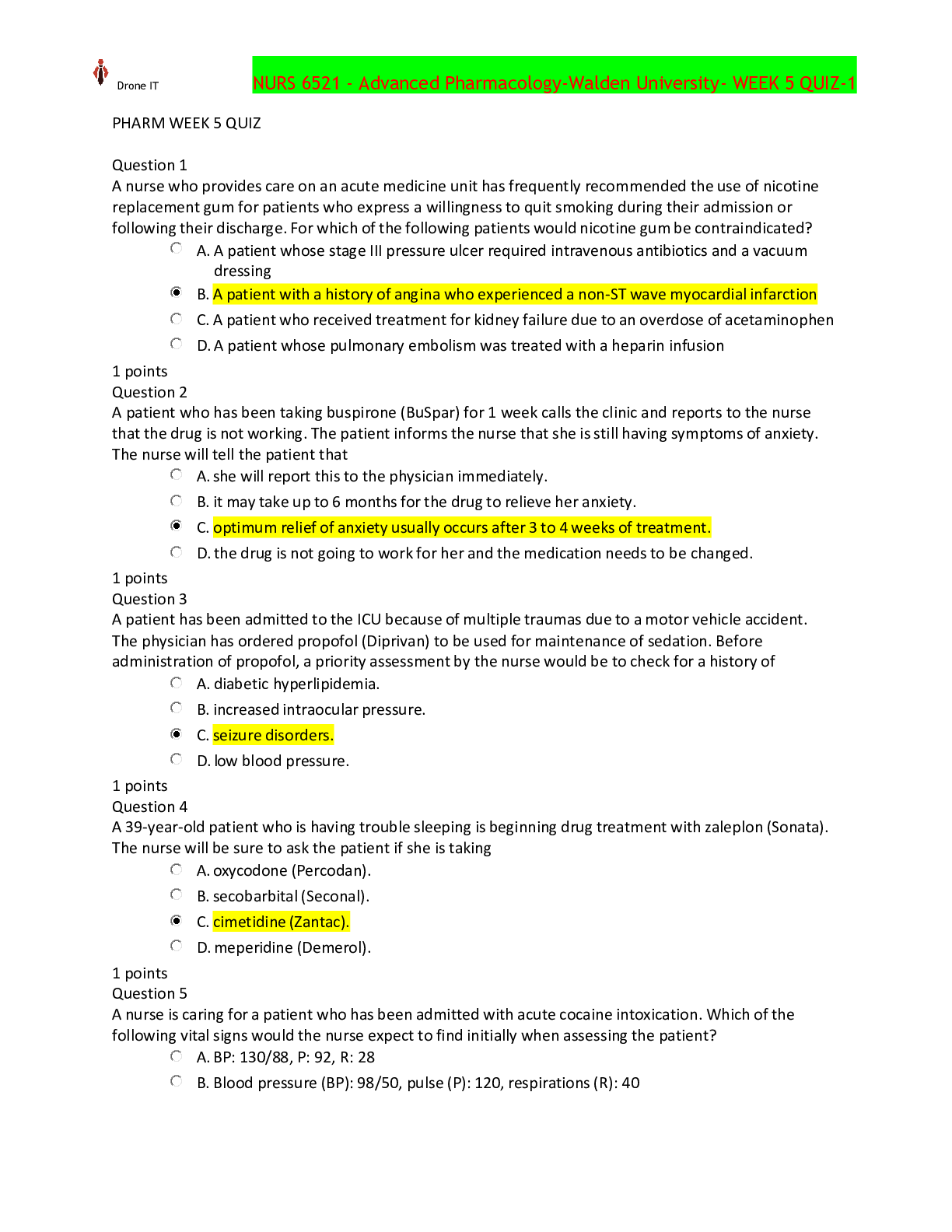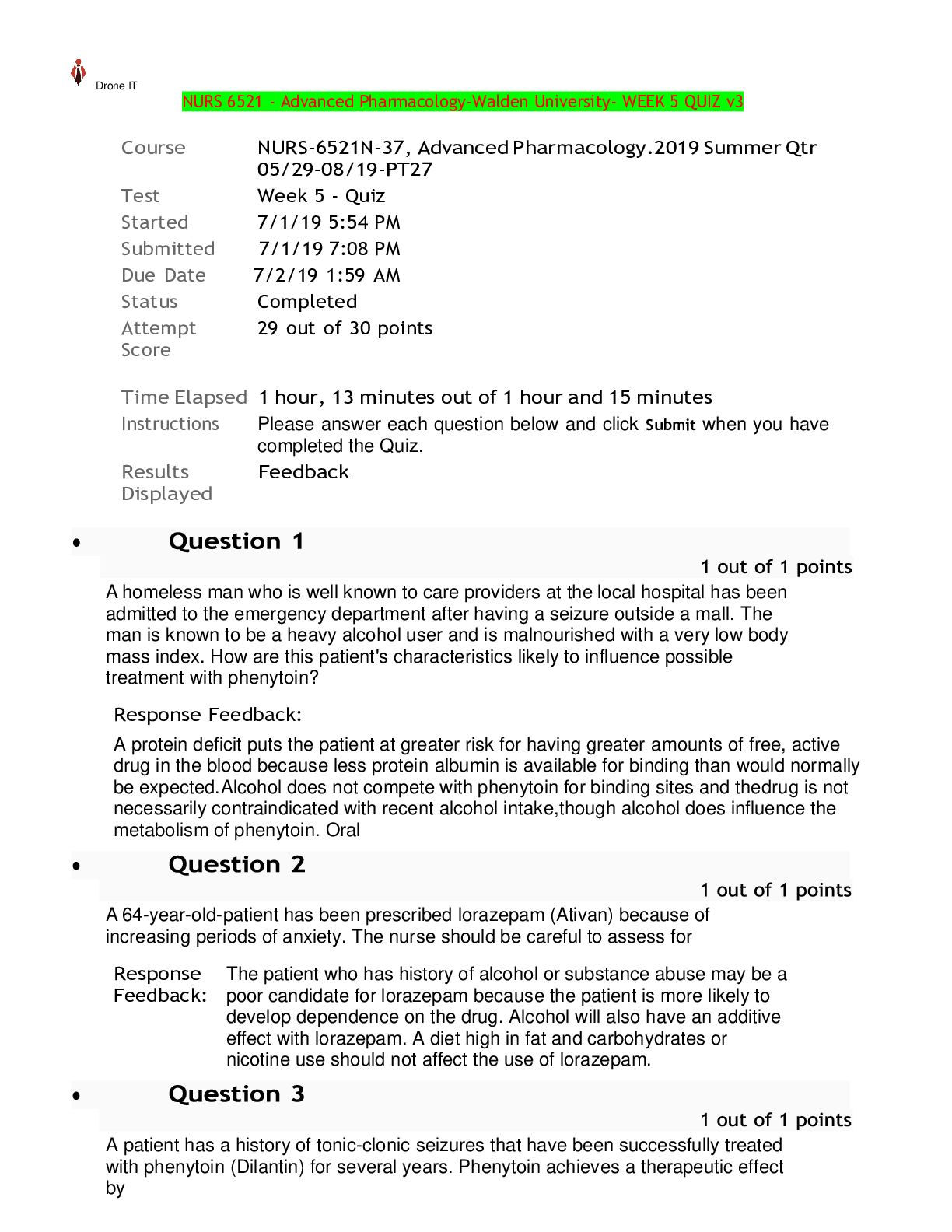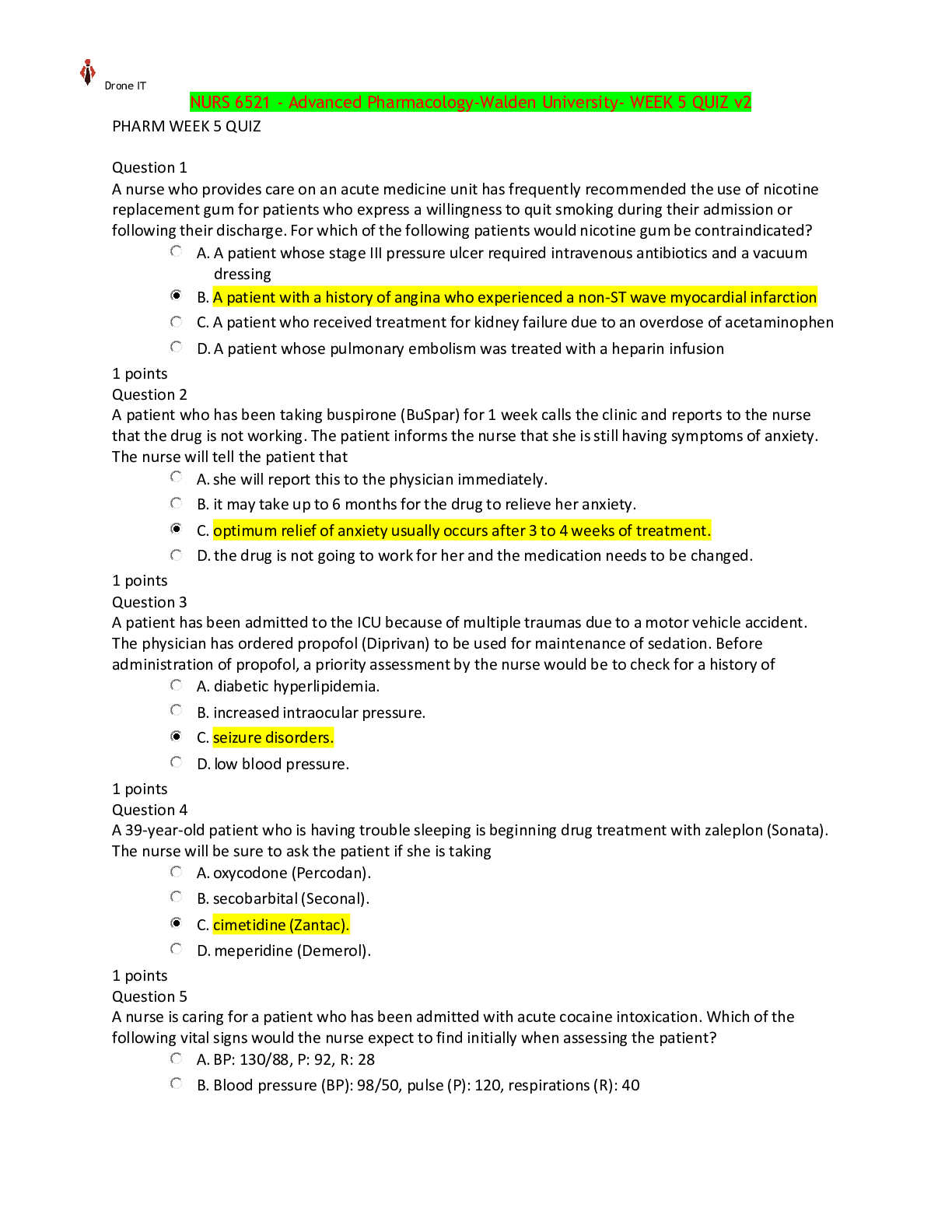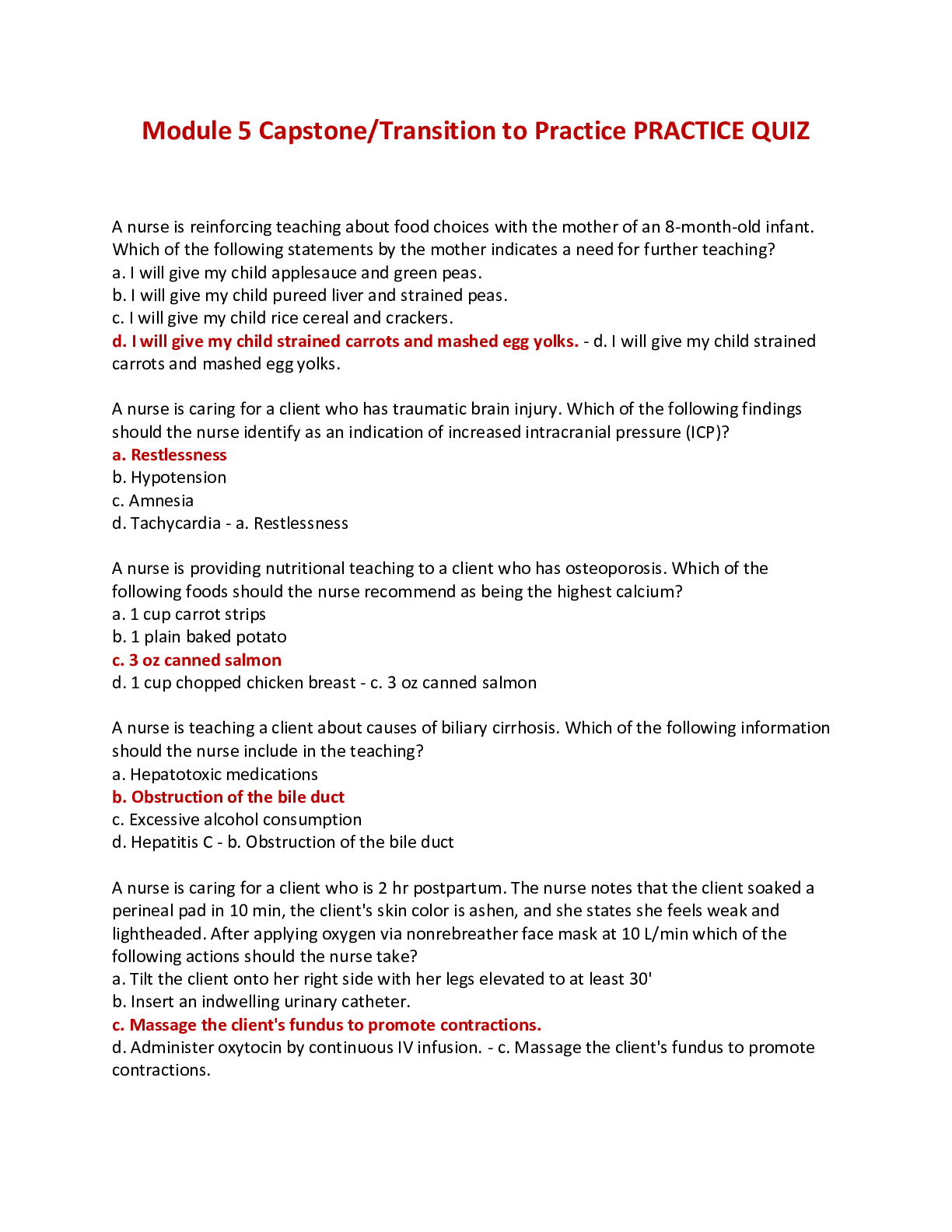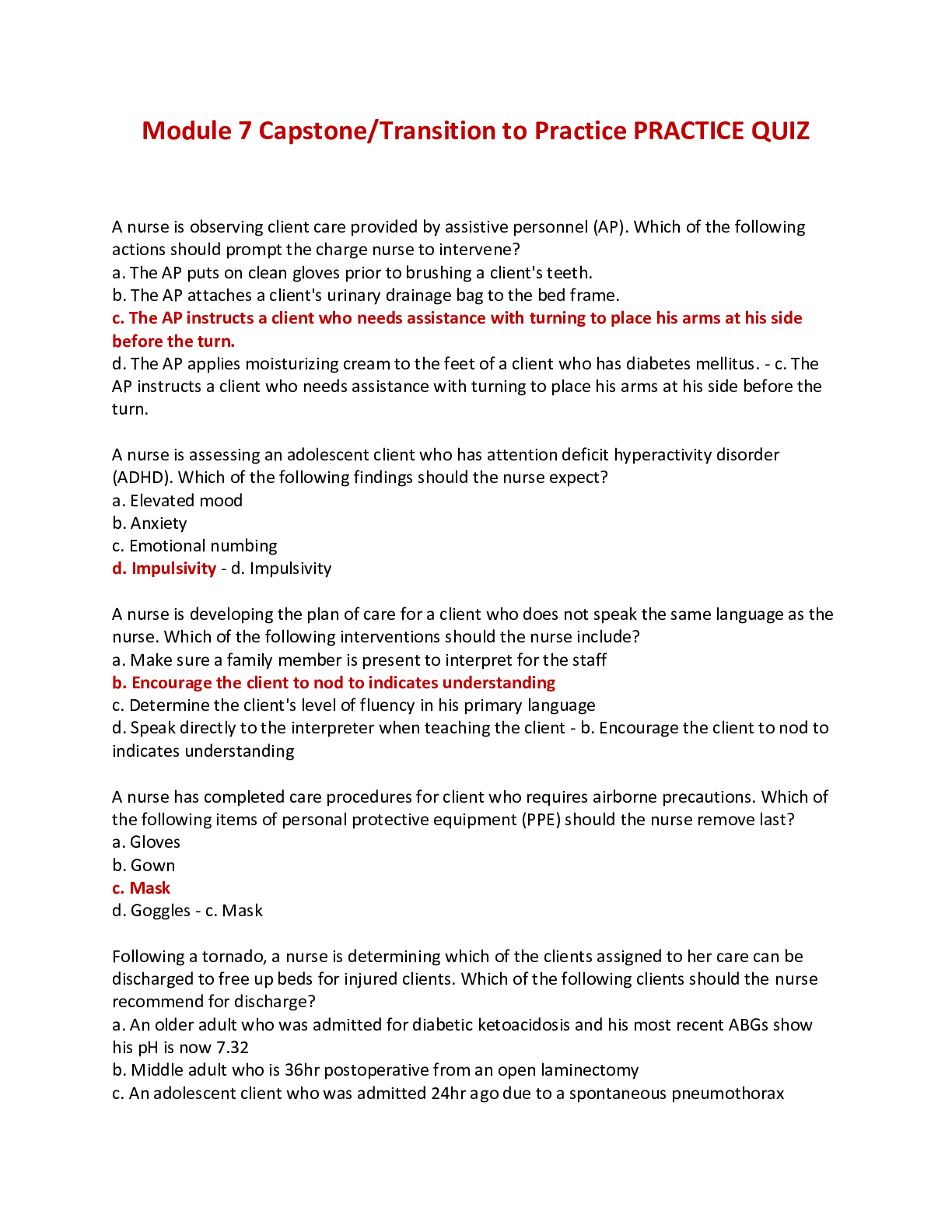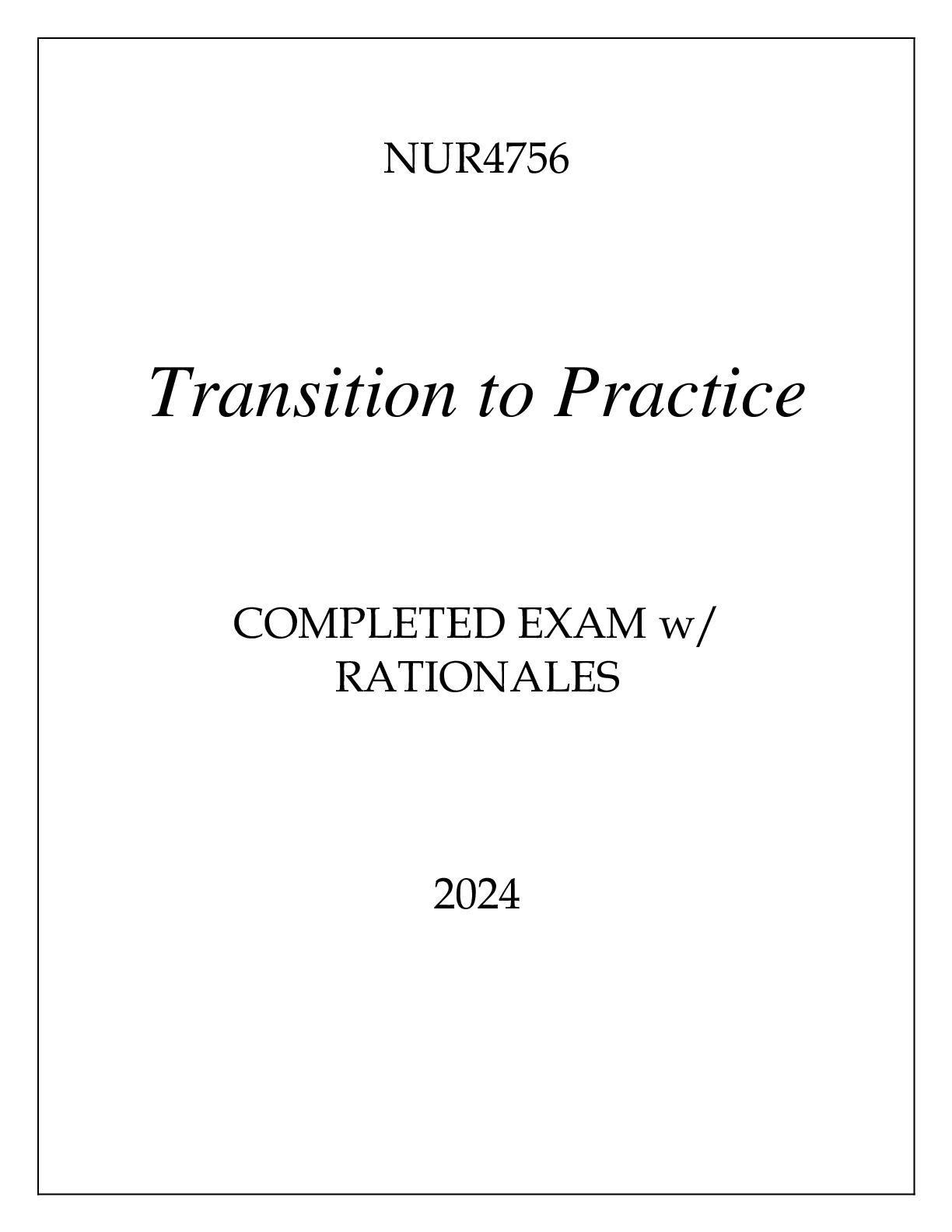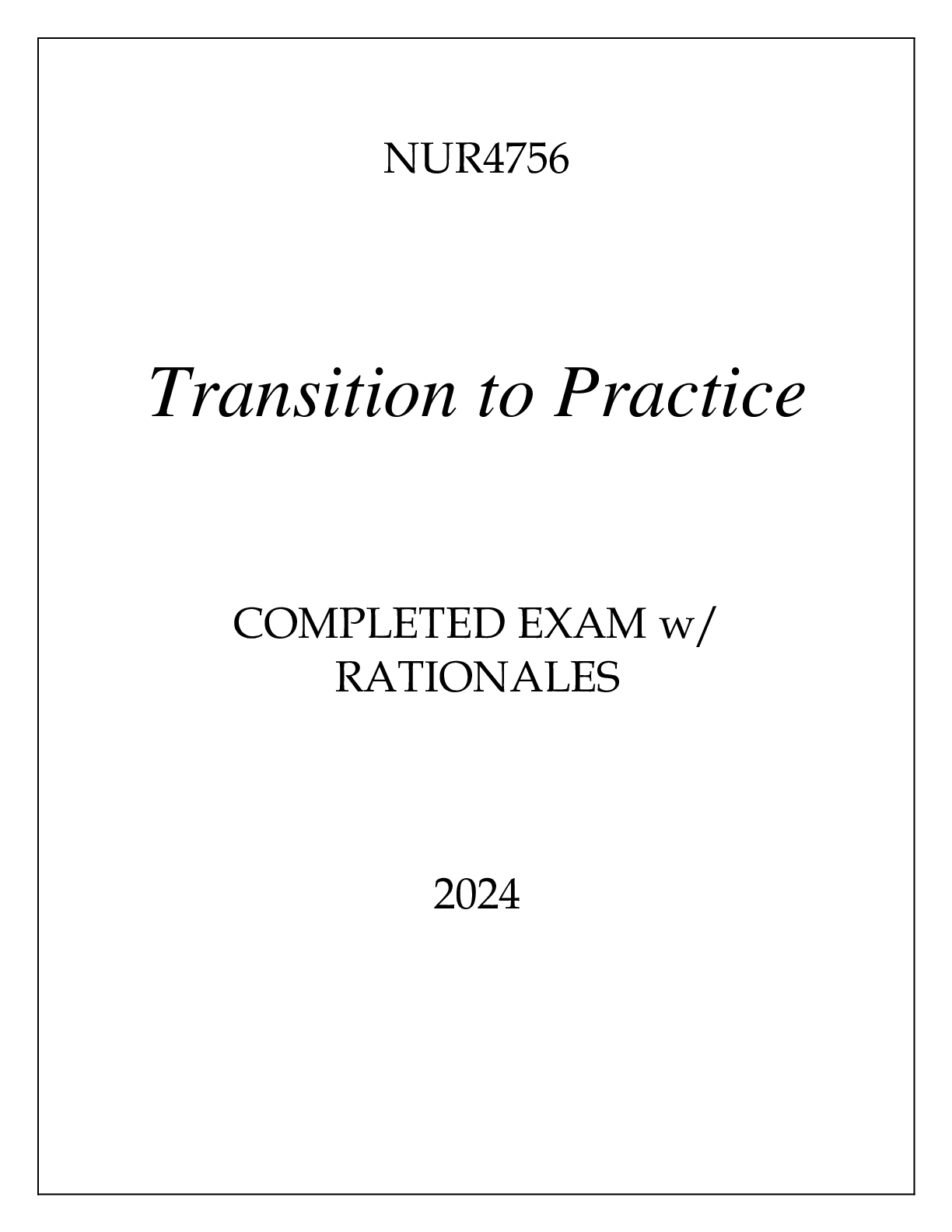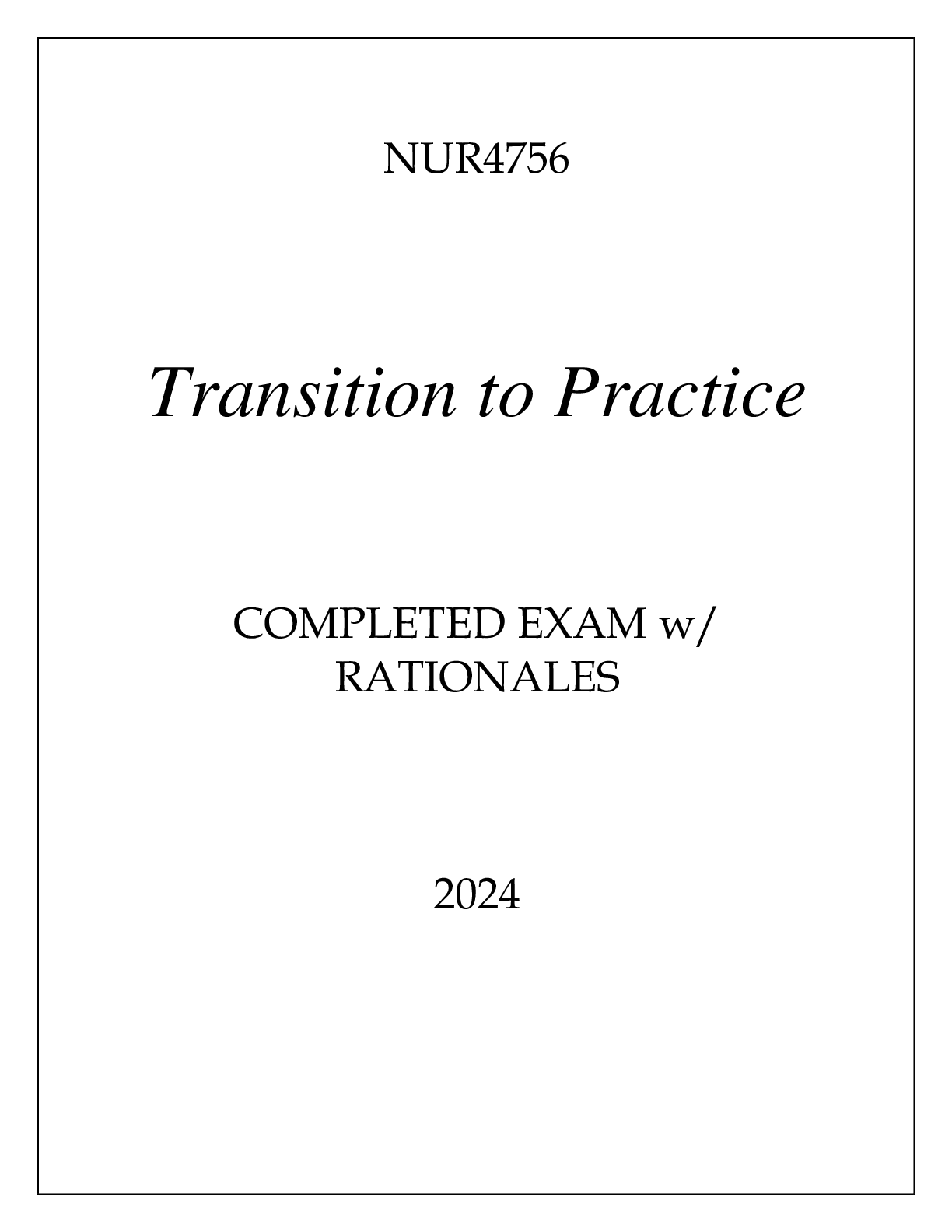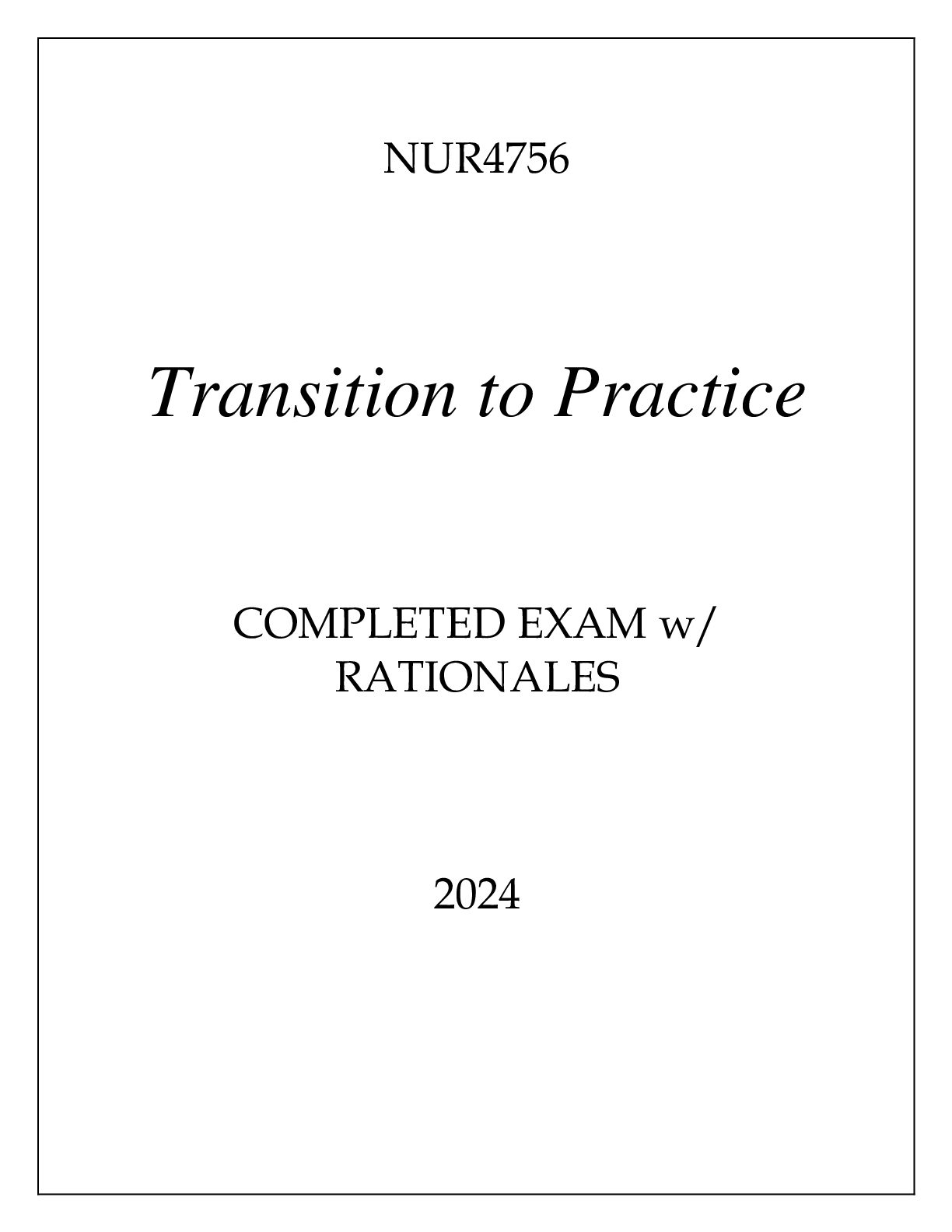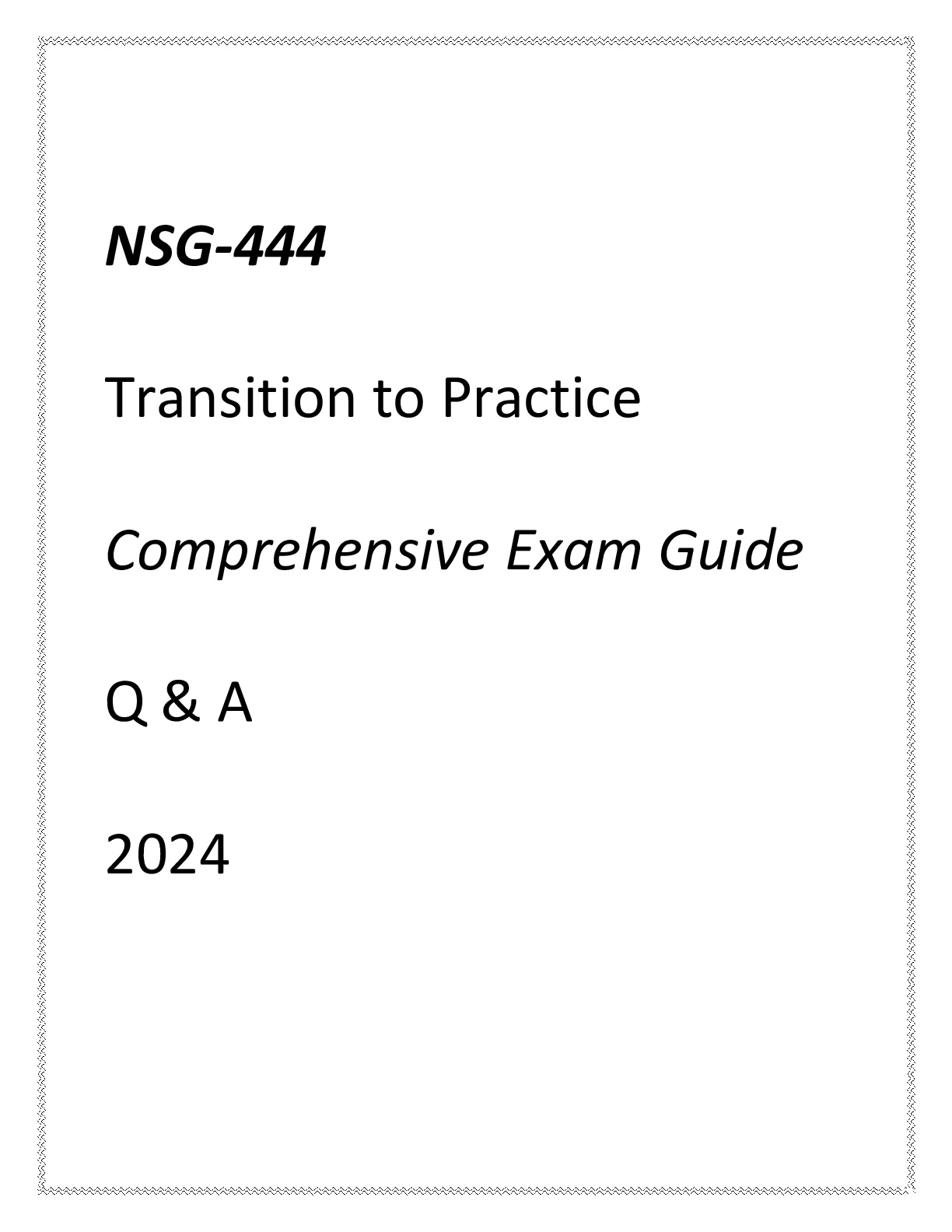*NURSING > EXAM > SOLVED- Elaborated Module 2 Capstone Transition to Practice Transition to Practice Module Gerontolog (All)
SOLVED- Elaborated Module 2 Capstone Transition to Practice Transition to Practice Module Gerontology Quiz 100% Correct!!
Document Content and Description Below
SOLVED- Elaborated Module 2 Capstone Transition to Practice Transition to Practice Module Gerontology Quiz Module 2 Capstone/ Transition to Practice Transition to Practice Module 11: Gerontology Mrs. ... Little is a 78-year-old woman with recently diagnosed Alzheimer-type dementia (AD) who is here today for an office visit with her 55-year-old daughter. According to her daughter, Mrs. Little struggles with word finding and has difficulty following directions. She appears "not to care about what is going on around her," while other times is engaged in family activities. According to her daughter, Mrs. Little will have an angry verbal outburst that is triggered by a minor problem. Her daughter states, "This is not like my mother. Usually she is very patient." When evaluating Mrs. Little, the NP considers that irritability in a person with early-stage dementia is often indicative of a: A. Mood disorder B. Thought disorder C. Hyperparathyroidism D. Normal pressure hydrocephalus - |Ans | >> Mood disorder Jane, age 74, is incontinent of urine about 50% of the time. Which of the following is the last resort in management of incontinence? A. Indwelling catheterization B. A bladder training program C. Intermittent catheterization D. Incontinence pads - |Ans | >> Indwelling catheterization Delirium in the older adult typically presents with which of the following behaviors? A. Agitation and wandering behavior B. Acute change in mental status and apathy; lack of response to stimuli C. Absence of purpose and apathy D. Agitation and restlessness - |Ans | >> Agitation and restlessness Social support is important for every age group. For adults, research has shown that which of the following is the most significant source of social support? A. Parents (if living) B. Close friends C. Children D. Spouse or significant other (if applicable) - |Ans | >> Spouse or significant other (if applicable) Prof.Exams The aging process results in a variety of physiological changes. One change is: A. a decreased absorption of fat-soluble vitamins B. an increase in pupil size C. an increase in enzymatic activity D. an increase in spleen size - |Ans | >> a decreased absorption of fat-soluble vitamins Constipation is a frequent and common problem in older adults. Principles of treatment include: A. suggesting a combination of applesauce, bran, and prunes to be eaten every morning B. Beginning supplemental bulk agents and encouraging exercise C. establishing a routine for early morning defecation and teaching clients not to ignore the urge to defecate D. encouraging adequate hydration and exercise and providing client education regarding a high-fiber diet and stopping laxatives - |Ans | >> encouraging adequate hydration and exercise and providing client education regarding a high-fiber diet and stopping laxatives Mr. Smith, age 68, comes to the primary care office complaining of inability to sleep, fatigue, and lack of concentration. As you talk with him, you discover that his wife dies less than a year ago. You note that he has lost over 15 lbs since his last visit 6 months ago. Although he is taking enalapril (Vasotec) 5mg PO daily, you measure his blood pressure to be 154/94 mmHg. An immediate priority would be to: A. adjust his antihypertensive medication regimen B. discuss beginning antidepressant therapy C. assess him for suicidal ideation D. refer him to a counselor and suggest a grief support group - |Ans | >> assess him for suicidal ideation Delirium is often acute and reversible. Reversible causes of delirium include: A. sepsis, syphilis, and use of warfarin (Coumadin) B. psychosis, vitamin B12 deficiency, and migraine headache C. subdural hematoma, depression, and use of anticholinergics D. depression, deafness, and use of nitrates - |Ans | >> subdural hematoma, depression, and use of anticholinergics The older adult is at greater risk for developing an eye infection than a younger person. This is because of the age-related A. greater emotionality B. decrease in tear production C. loss of subcutaneous tissue D. change in vitreous humor - |Ans | >> decrease in tear production A lab value that is commonly decreased in older adults is:Anatomy and Physiology #New #Pathophysiology #Advanced #Chamberlain #Latest #Nursing #Aplus #Grade #results #allcorrect #midterms #finals #keiser #Ihuman #BIOD 152 #Anatomy #PhysiologyAnatomy and Physiology #New #Pathophysiology #Advanced #Chamberlain #Latest #Nursing #Aplus #Grade #results #allcorrect #midterms #finals #keiser #human #BIOD 152 #Anatomy #Physiology [Show More]
Last updated: 2 years ago
Preview 1 out of 7 pages

Buy this document to get the full access instantly
Instant Download Access after purchase
Buy NowInstant download
We Accept:

Reviews( 0 )
$10.00
Can't find what you want? Try our AI powered Search
Document information
Connected school, study & course
About the document
Uploaded On
Feb 16, 2023
Number of pages
7
Written in
Additional information
This document has been written for:
Uploaded
Feb 16, 2023
Downloads
0
Views
44





